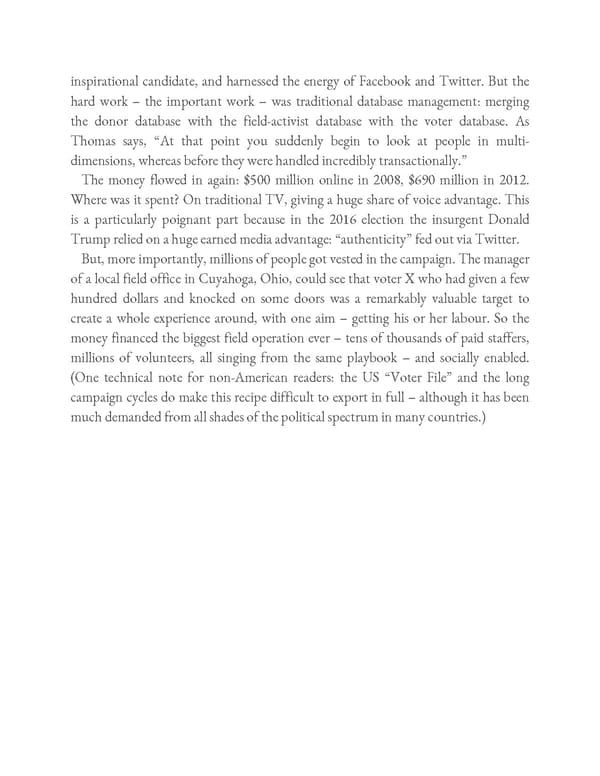inspirational candidate, and harnessed the energy of Facebook and Twitter. But the hard work – the important work – was traditional database management: merging the donor database with the field-activist database with the voter database. As Thomas says, “At that point you suddenly begin to look at people in multi- dimensions, whereas before they were handled incredibly transactionally.” The money flowed in again: $500 million online in 2008, $690 million in 2012. Where was it spent? On traditional TV, giving a huge share of voice advantage. This is a particularly poignant part because in the 2016 election the insurgent Donald Trump relied on a huge earned media advantage: “authenticity” fed out via Twitter. But, more importantly, millions of people got vested in the campaign. The manager of a local field office in Cuyahoga, Ohio, could see that voter X who had given a few hundred dollars and knocked on some doors was a remarkably valuable target to create a whole experience around, with one aim – getting his or her labour. So the money financed the biggest field operation ever – tens of thousands of paid staffers, millions of volunteers, all singing from the same playbook – and socially enabled. (One technical note for non-American readers: the US “Voter File” and the long campaign cycles do make this recipe difficult to export in full – although it has been much demanded from all shades of the political spectrum in many countries.)
 Ogilvy on Advertising in the Digital Age Page 329 Page 331
Ogilvy on Advertising in the Digital Age Page 329 Page 331